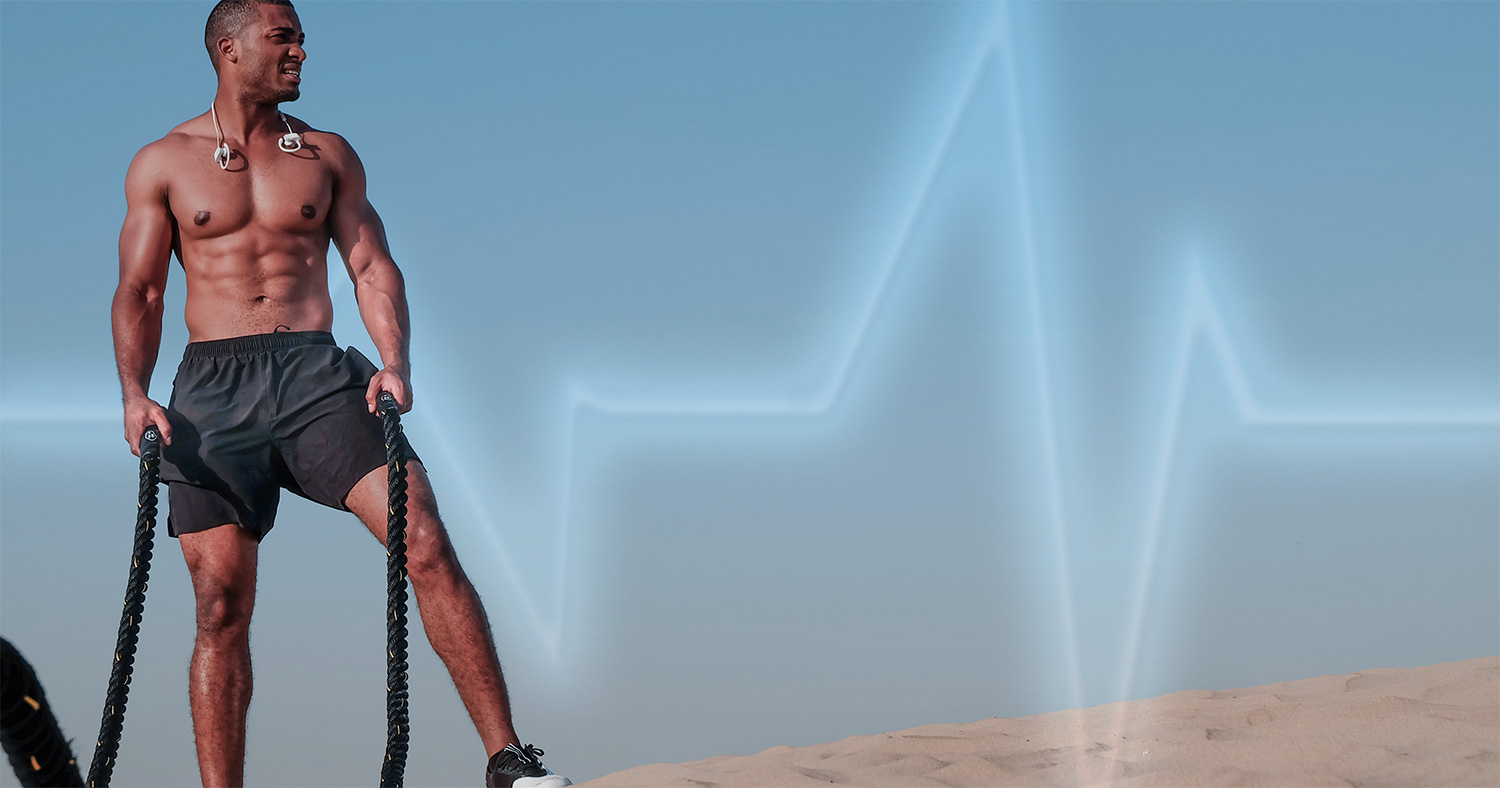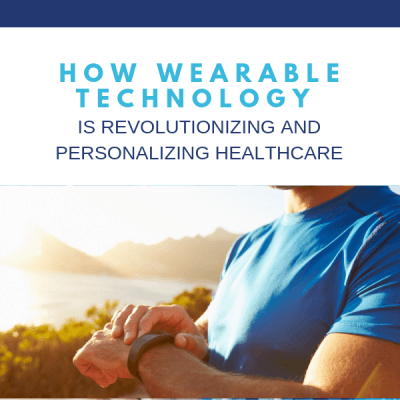
Heart rate variability (HRV) has stormed into the mainstream health and fitness world as one of the best indicators of daily and overall well-being. It’s an effective marker for sleep, recovery, performance, and health of the heart and autonomic system.
Studies also show that a higher HRV has been linked to a lower risk of mortality, especially for sudden cardiac death.
HRV might be one of the best tools to tracking acute and chronic health concerns. So what is HRV and why does it matter to you?
What is heart rate variability?
Heart rate variability (HRV) is the variation that occurs in the intervals between consecutive heartbeats.
Okay, but what does that actually mean?
Let’s start with understanding your heart rate, which is not the same as heart rate variability. Your heart rate (HR) is the amount of times your heart beats in a minute. If you take your pulse on your wrist, your heart rate is the number of pulses you feel in a 60-second timeframe.
Heart rate variability is actually referring to the silent period in between those beats or pulses. Your heart doesn’t actually beat at a steady rate. If you have a heart rate of 60 beats per minute, your heart isn’t actually beating every second consistently. There are slight millisecond variations between each heartbeat.
We’re not like the Tin Man. Our hearts aren’t machines that beat at the same rate consistently. Our hearts are gentle, sensitive organs that have slight (but healthy) irregularities.
Although measured in milliseconds, you can actually feel the difference in the “silent” intervals between your heartbeats. Right now, put your fingers on your wrist and search for your pulse. Take a few deep breaths in and out. You’ll probably notice that the time between beats gets longer while you’re exhaling—that’s because your heart rate is slowing down. You’ll notice the interval gets shorter when you’re inhaling because of an increase in heart rate. Referred to as sinus arrhythmia, this is the most basic way that our heart rate varies.
I’ll reiterate that you actually want variation in your heart rate intervals, because that shows that you’re healthy!
How does heart rate variability change?
Your heart rate variability isn’t a static number. It’s constantly changing based on different events and scenarios, both internally and externally.
Keep in mind that heart rate variability refers to the variation of the intervals between heartbeats. It’s not a number or time period itself.
So a “low” HRV means that the intervals between your heartbeats are more consistent and steady. There is low or less variability. For example, if your heart rate were 60 beats per minute, the majority of your intervals might be precisely 1 second.
A “high” HRV means that there is a lot more variation in the intervals between your heartbeats. With a 60 beats/minute HR, you might have one beat after 1.03 seconds, another after 1.06 seconds, then 1.05 seconds, then 1.01 seconds. There is more variation in the time between the beats.
How does heart rate variability work?
Heart rate variability is directly linked to, and controlled by, the autonomic nervous system. HRV actually is an indicator of how well your nervous system is functioning.
There are two sides to the autonomic nervous system: the sympathetic and parasympathetic systems.
The sympathetic system is what triggers the stress-induced fight or flight response. It raises your adrenaline and cortisol, and it prepares your body to take action against some stressor. The sympathetic system should be activated as a short-term response to certain stressful events, but it can be seriously unhealthy for your mental and physical state to live in a high sympathetic state.

The parasympathetic system is what helps restore homeostasis (balance) in your body by pulling down the response of the sympathetic system. This controls the rest, recovery, and digestion processes.
When your body is stressed, the sympathetic system kicks into gear. This releases stress hormones and increases your cardiac output. Basically, it tells your heart to pump out more blood, so the blood can transport oxygen to the muscles and tissues—which will help you in the fight or flight response. When the sympathetic system is engaged, your heart rate variability decreases. Your heart is generally beating faster and more consistently.
After the stressful situation is gone, the parasympathetic system activates to slow your heart rate back down to resting. This increases your heart rate variability to restore homeostasis.
In general, you want a higher HRV. This is because a higher HRV, or more variability between heartbeats, indicates that your body has a strong ability to tolerate stress.
A high HRV indicates that your parasympathetic system is working. A low HRV indicates that your sympathetic system is engaged, which means you’re body is being stressed out (mentally or physically).
Why is this important? Your body needs to be able to respond to stressors, so you don’t get eaten by a bear (for example). But you can’t live in that stressed state or it would do damage to your heart. Essentially, the autonomic system and heart rate variability enable your heart to respond to different needs and situations.
Key point: If you have a low variation in heart rate variability compared to your baseline, something is likely stressing out your body.
Why do we need to track heart rate variability?
Heart rate variability is the biggest marker we have to the health and wellness of our autonomic nervous system. And the nervous system is tied to every automatic process in the body like regulation of blood sugar, blood pressure, body temperature, sweat, digestion, and more.
When we understand how our autonomic nervous system is functioning, we can better understand how almost every process in our body is operating.
HRV is especially used as an indicator of fitness, our body’s ability to handle and recover after stress, and our heart health. A high HRV is an indication of a healthy cardiovascular system. A lower heart rate with a high HRV means that your parasympathetic system and heart are working effectively to bring your body back to homeostasis after stress or exercise.
HRV is one of the most sensitive changes in the body. The interval between your heartbeats is one of the first indicators that something is wrong. Watching for these fluctuations can alert you to changes in your health well before other symptoms show up.
What are some examples of when HRV might change?
- Stress or lack of sleep: Your HRV will likely drop when you’re stressed or sleep deprived, and you’ll need more time for recovery.
- Intense endurance exercise: Working out acutely lowers your HRV because your body is stressed out. But during recovery, your HRV will jump back up. If it doesn’t increase, you may be training too hard or too often. This is important to track if you’re on a fitness or training plan.
- Substances: Drugs, alcohol, and smoking all lower your HRV. You may notice that you’ll have a lower HRV after a night out because your body is stressed while trying to detox.
- Dehydration: Your HRV will lower quickly when dehydrated, because it doesn’t have the water it needs to function properly. When you re-hydrate, it should increase again.
One of my favorites uses of the HRV is that you can use it to tell if you’re about to get sick. If your HRV goes down but you’re not stressed out in any way (mental or physical), you might be on your way to getting sick. In fact, HRV usually lowers even before you develop symptoms of sickness. So if you notice your HRV is lowering, you may want to take some time to rest and recover to combat any illness about to set in.

What affects heart rate variability?
Our heart rate variability actually changes every day based on activity, stress, and health. It’s constantly changing in response to different situations—and that’s a good thing! Heart rate variability can be affected by age, hormones, body functions, lifestyle, external events, and more.
About 30% of our heart rate variability boils down to genetics. But the other 70% is completely controllable. You can actually improve your HRV based on your health, fitness, recovery skills, and stress resilience.
In the last section, I’ll talk more about how you can direct your HRV to improve your overall health and wellness.
How do you measure HRV?
There are a few different methods to measure heart rate variability. One of the most popular ways is the ECG-based (electrocardiogram) method, which calculates the time between R waves in the QRS complex. These are referred to as R-R intervals. Some trackers use PPG, which measures interbeat intervals (IBI).
Different trackers use different measurement methods. There isn’t really one “right” way to do it. So you can choose a wearable that’s best for your lifestyle and look.
Which wearable trackers are best? Get all the info you need here: How Wearable Tech Is Revolutionizing and Personalizing Healthcare.
How can I get started tracking HRV?
Everyone has a unique heart rate variability based on genetics and lifestyle. There are also a lot of different ways to measure and track HRV, so it’s hard to compare different variations. So you’ll have to track your own HRV to understand what your baseline looks like in order to utilize HRV as an indicator of your personal health.
First, you’ll want to find your HRV baseline. Note when you’re feeling “average”—not great, not bad— because that’s usually your baseline. You’ll want to keep track of this for a week or two to get a good idea of what your HRV is. If you have a tracker, it will usually help analyze your baseline for you.

Once you have your baseline, it’s easier to see how your body is reacting. If your HRV goes down and you have a low HRV, your body might be stressed, overworked, or overwhelmed for some reason. You could have mental stress, you could be getting sick, or you might not be recovering effectively. If your HRV goes up with a high HRV, then you might be doing something healthy for you—like meditating or being creative.
I recommend keeping a log of your HRV, whether or not you have a wearable that tracks it for you. This helps you understand all of the different variables going on in your life that could be affecting your HRV. For example, your HRV might decrease when you’re driving. If you log this several days in a row, you might start to notice that your HRV only drops in traffic—because traffic stresses you out!
There’s a lot that can go into HRV tracking, so keeping a log is the best way to manage and analyze all of the factors at once. Learn more about how to keep a biohacking log here.
How can I improve my HRV?
Here’s what will decrease your HRV in the short term:
- Stress
- Poor quality and quantity of sleep
- Food intolerances, especially lactose
- Alcohol and/or drugs
- Sickness
- Medications (antihistamines, antidepressants
- Hot therapy
Even exercise will decrease your HRV because you’re stressing out your body. Then, your HRV will start to increase as your body starts to recover.
Here’s what will decrease your HRV long-term, which is a major indicator of poor health:
- Age (your HRV will likely change as you age)
- Chronic stress or burnout
- Poor diet
- Chronic inflammation
- Lack of fitness
- Chronic disease
- Lack of sleep
- Overtraining
- Unhealthy environment
If your body is stressed out in any way for an extended period of time, it will show up in a decreased HRV. This means you’ll start to notice a downward trend in your HRV over time, and your “baseline” actually starts to get lower and lower.
A low HRV over an extended period of time isn’t a problem on its own… It’s just an indicator that there’s something wrong. So if you notice this downward trend, it’s time to chat with a medical professional!
But there are actually lifestyle changes you can make that will increase your heart rate variability by improving your recovery and improving your health.
So what can you do to increase your HRV, in the short and long term?
- Breathing exercises
- Intermittent fasting
- Take supplements, specifically omega-3s
- Meditate (read: The Neuroscience Behind Meditation)
- Reduce stress
- Reduce alcohol intake
- Participate in hot and cold therapy
- Lose weight
- Work out consistently
The awesome news is that these lifestyle changes also impact your epigenetics. Learn more about epigenetics and the impact on health with the following resources:
- What Is Epigenetics And Why Do You Care
- Epigenetics Series: What Should You Eat For Your Body Type?
- Epigenetic Series: How To Sleep For Better Health
- Epigenetic Series: How Does Stress Affect Your Genes?
HRV is a tracker of your health, but not a health condition on its own. If you want to improve your health, it starts with hacking your genes.
Are you ready to get your health on track? Want to know exactly how your body and heart rate variability will respond to certain situations based on your genes and lifestyle? Want greater control over your health and wellness?
Then you need to check out my performance coaching. We’ll work together to unlock your genetic code and come up with a specific plan for your lifestyle choices and environmental factors so you can be on the path towards energy, health, vitality, and life!
Take your life to the next level here.
Want more tips to optimize your health and testosterone?
Listen to the latest podcasts. Click HERE
Tracy Gapin, MD, FACS is a board-certified Urologist, world renowned Men’s Health & Performance Expert, Author, and Professional Speaker. Using state-of-the-art biometric monitoring, nutrition and lifestyle intervention, Dr. Gapin coaches Fortune 500 executives and evolutionary leaders of business, sports medicine, and high performance. He specializes in cutting-edge precision medicine with an emphasis on epigenetics, providing men with a personalized path to optimizing health & performance. www.GapinInstitute.com












